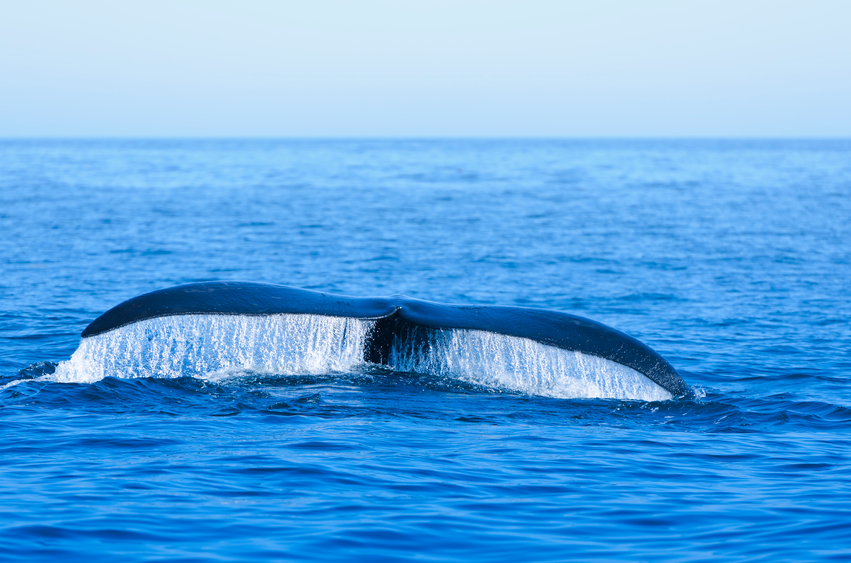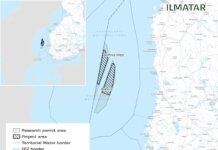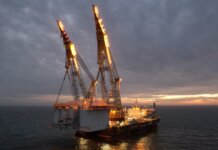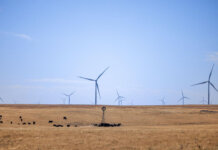The year of 2016, at least through August, has been quite remarkable for both the U.S. offshore wind energy industry and the small unmanned aircraft systems (UAS) industry.
On Aug. 18, Deepwater Wind made history by completing construction of the nation’s first offshore wind farm, located off the coast of Block Island, R.I., with operations expected to commence later this year. On Aug. 29, the Federal Aviation Administration’s (FAA) much awaited final rule allowing for greater integration of non-recreational small (weighing less than 55 pounds) UAS into the National Airspace System (NAS) became effective.
The FAA’s new small UAS rule will help launch essentially endless commercial applications of this rapidly evolving, game-changing technology – further expanding the UAS industry for the economic benefit of numerous existing businesses and other new industries, including the fledgling U.S. offshore wind energy industry.
One of the core benefits of UAS (and unmanned technology generally, such as ground, water surface and subsurface unmanned vehicles) is that they are much safer to operate and more economical and efficient than are traditional manned vehicles carrying out necessary and critical missions that, by their nature, are unsafe.
Manned vehicles, such as airplanes or helicopters, can be much more dangerous and expensive to operate and maintain, and they also require a high level of logistical communications, coordination and time before they can be deployed.
By comparison, deployment of UAS technology dramatically mitigates human safety risk, seeing as no one is actually on board, and unmanned aircraft are more readily portable – thus allowing for a much more timely and inexpensive deployment in unsafe conditions or emergency situations.
The U.S. offshore wind energy industry is taking its very first step; going forward, it will be well positioned to take advantage of the quickly expanding drone technology, which can help reduce the installation costs of offshore wind development projects, for example.
For instance, UAS can be deployed to assist in various pre-construction surveys (seasonal wildlife utilization) of Outer Continental Shelf (OCS) blocks for a proposed leasing area.
For one, the technology can help avoid impacts to the North Atlantic right whale – which is listed as an endangered species and is protected under the Endangered Species Act (ESA) and the Marine Mammal Protection Act (MMPA).
On Jan. 27, the critical habitat previously designated (in 1994) for the North Atlantic right whale was significantly expanded in its northeast feeding area and in its southeast calving area. The National Marine Fisheries Service within the National Oceanic Atmospheric Administration has already designated Seasonal Management Areas (SMAs) for regions along the Atlantic seaboard (Northeast, Mid-Atlantic and Southeast) to protect against vessel right whale strikes in areas where this species is known to seasonally feed, migrate and rear calves.
Within the SMAs, vessel speeds are restricted to 10 knots or less (50 CFR 224.105.) Federal regulations also require vessels to maintain a separation distance of 500 yards (460 meters) from a right whale and to implement avoidance measures if the vessels are within the prohibited distance (50 CFR 224.103(c)). The North Atlantic right whale SMA vessel speed restrictions and separation distance requirements are also set forth in BOEM’s Addendum “C” Standard Operating Conditions – as part of the OCS Lease instrument – which lessees are required to comply with.
In addition to the North Atlantic right whale, BOEM’s Addendum “C” Standard Operating Conditions also impose vessel separation distance restrictions for other whale species and listed sea turtle species.
Now, UAS technology can be a used as an innovative and efficient tool to help detect listed species – such as the North Atlantic right whale – and then coordinate vessel avoidance measures.
There will be a lot of vessel traffic around offshore wind lease sites; in turn, being able to easily maintain vessel separation distance means vessel strikes are much less likely to occur – which keeps a lessee in compliance with BOEM’s OCS Addendum “C” Standard Operating Conditions and ultimately avoids ESA/MMPA liabilities regarding impacts to North Atlantic right whales and other listed species.
Going another step further for nighttime vessel operations (and presuming you have been issued an FAA waiver for small UAS operations at night), an unmanned aircraft can be equipped with a payload consisting of a thermal imaging sensor for the detection of heat signatures (whales and other species) at the water’s surface.
UAS technology can also benefit offshore wind development in other ways. For instance, during construction phases, drones can serve as an eye in the sky to provide zoom-in or zoom-out monitoring of construction activities (tower, nacelle or blade installations) in real time.
This may be useful for better coordination of construction task sequencing, identifying potential flaws in construction materials, and better assessing safety conditions for construction workers so that offshore accidents and injuries can be avoided or minimized. As offshore wind projects are constructed and come online, developers will, of course, need to conduct operations and maintenance inspections through their lifespan.
UAS technology already is building a positive track record for conducting inspections of land-based critical infrastructure – from railroads, pipelines, bridges, industrial sites, power lines, cell towers and on-shore wind farms. This same efficiency can easily be captured and applied to the up-and-coming U.S. offshore wind energy.
From pre-construction surveying, minimizing risk liability for compliance with the Endangered Species Act and Marine Mammal Protection Act, to post-construction operations and maintenance inspections, the incorporation of UAS technology will allow for a safer, more efficient undertaking of activities and tasks that will help protect a project’s bottom line – and ultimately, its marketability.
Todd Sumner is an attorney and legislative affairs advocate representing clients on a range of environmental, renewable energy, unmanned systems technologies and regulatory matters. He is based in Tallahassee, Fla., and can be reached at todd@sumnerlawoffices.com.




